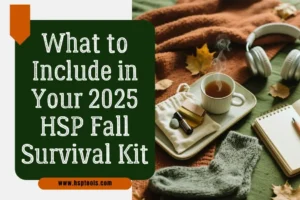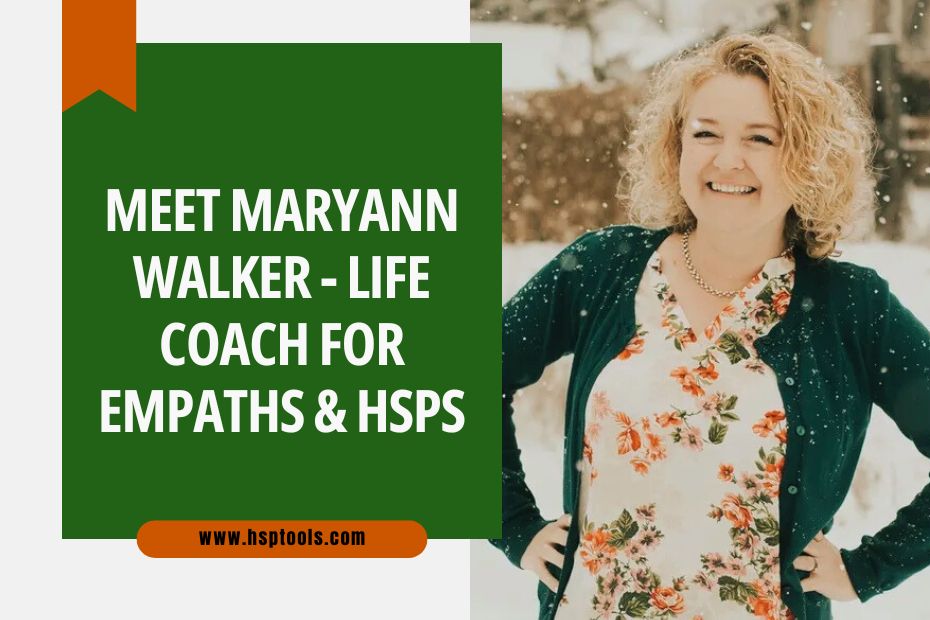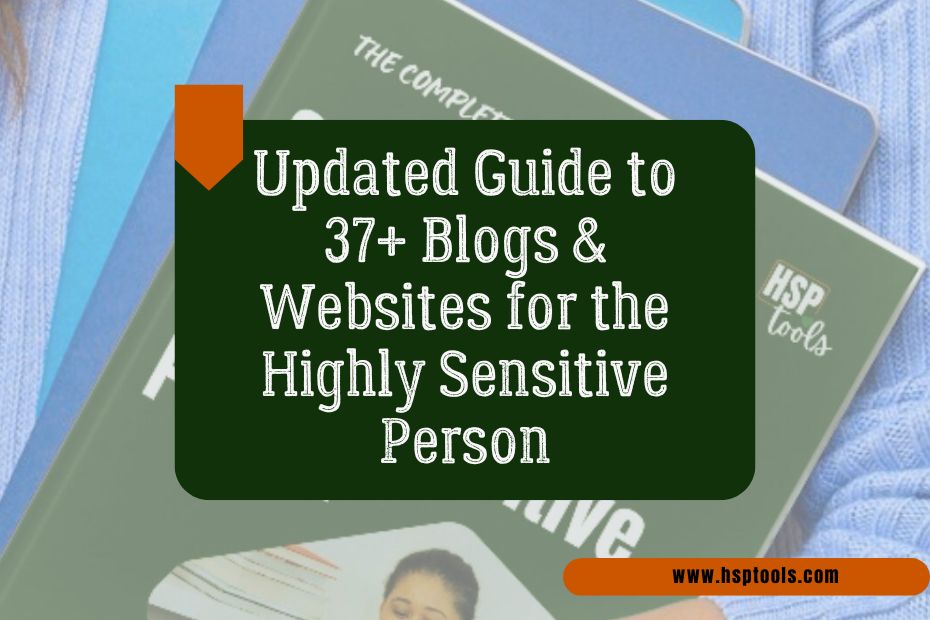Cozy Without the Chaos: Practical Fall Fashion Ideas for the Sensitive Soul
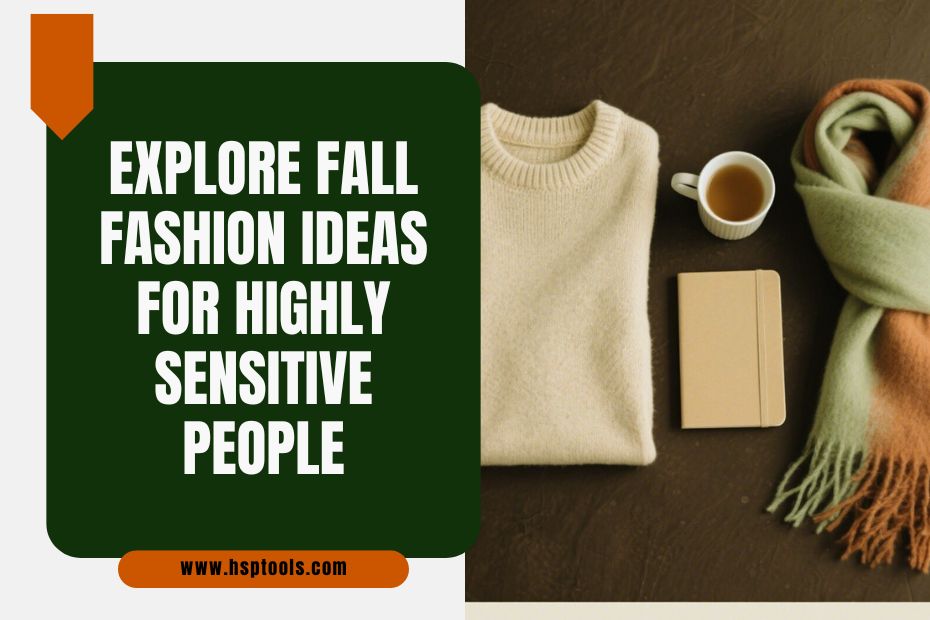
Fall fashion is everywhere. Thick knits, new color palettes, and boots in every direction fill up our feeds and storefronts. For some people, that’s exciting. But for Highly Sensitive People, it can feel overwhelming.
The mix of textures, the pressure to layer, and the constant shifts in temperature often turn getting dressed into a source of stress instead of comfort.
Fall fashion for HSPs has to go beyond style. It needs to consider sensory-friendly clothing, emotional ease, and flexibility. It’s not just about how something looks. It’s about how it feels on the skin, how it moves with the body, and whether it allows you to breathe a little easier as you move through your day.
This season, some of the most talked-about fashion trends actually lean into what many HSPs naturally seek; comfort, softness, and ease.
If you’ve been craving cozy fall outfits that align with your sensitivity rather than fight against it, this guide will help you find practical ideas that make getting dressed less stressful and more supportive.
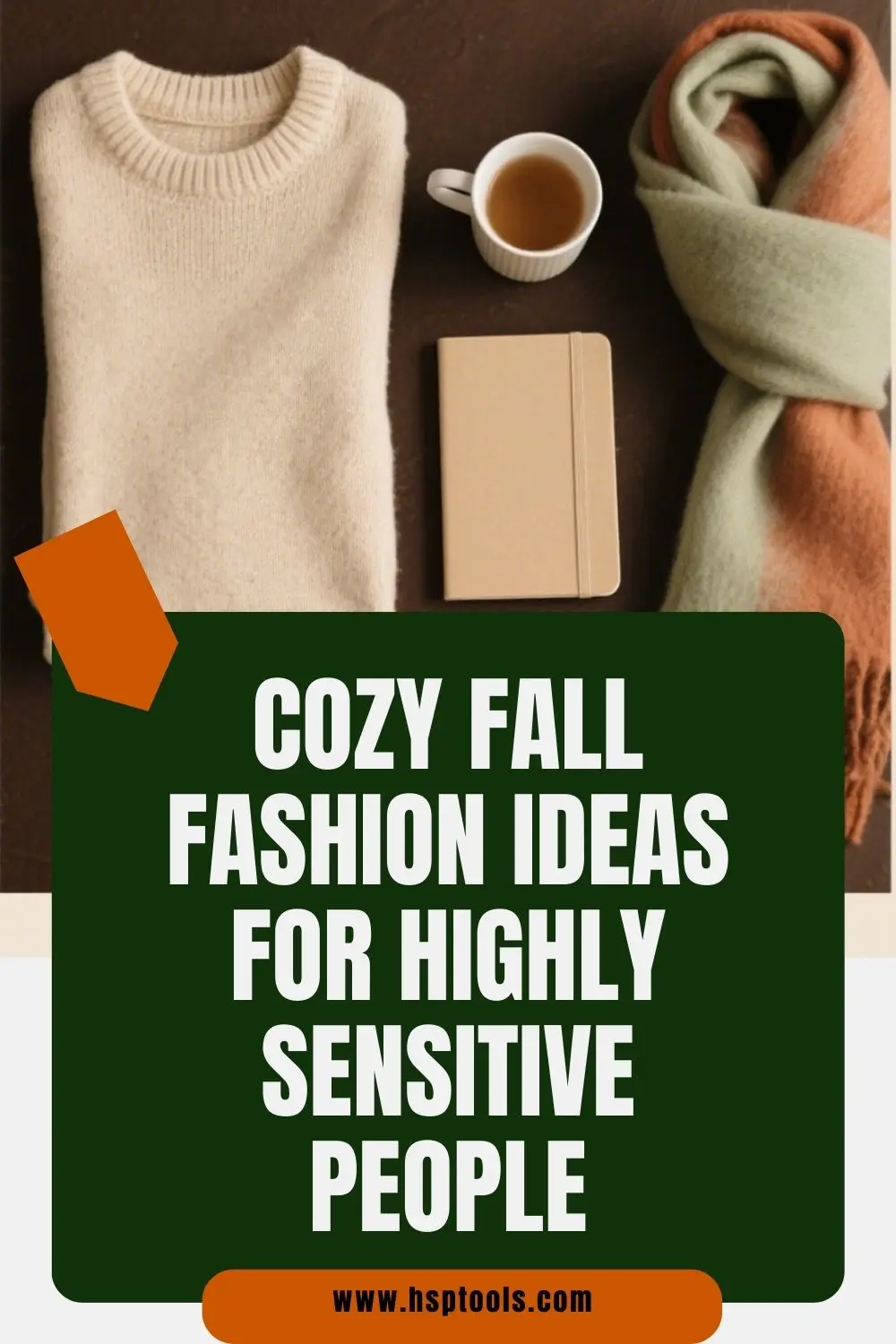
Disclaimer: This post may include affiliate links, meaning we will earn a commission if you click and purchase. Please know that you never pay extra and all our recommendations are based on products and services we believe in. Also, the text and images in this post were generated with the help of AI.
1. Why Fall Fashion Overwhelms Highly Sensitive People
What most people see as cozy layers and seasonal style shifts can feel completely different to a Highly Sensitive Person.
Fall fashion brings texture changes, shifting weather patterns, social pressure to “look put together,” and an explosion of visual input—all of which can quickly trigger sensory overload.
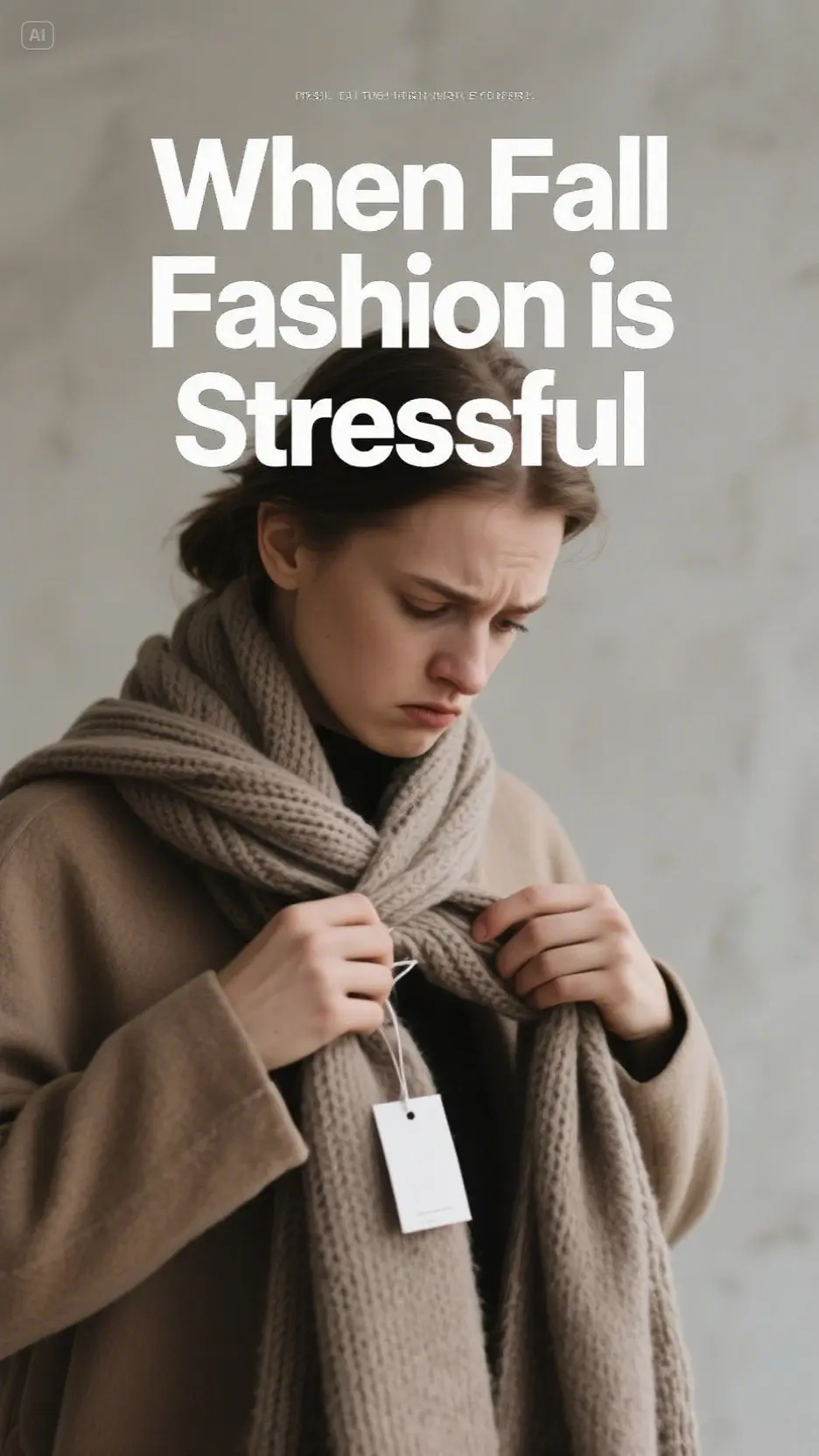
It’s Not Just the Clothes; It’s the Experience
For many HSPs, fall isn’t just about putting on a sweater. It’s a full-body experience that starts the moment you get dressed and often stays with you throughout the day.
A scratchy scarf or tight waistband can linger in your awareness, creating a low-level sense of agitation that’s hard to shake. This ongoing sensory input can drain your energy before you’ve even left the house.
Some common struggles include:
- Fabric discomfort
Thick knits, wool blends, and synthetic materials are common in fall clothing, but they can cause itchiness, irritation, or even a feeling of being “trapped” in your own outfit. - Temperature swings
Fall weather is famously unpredictable. A cozy outfit might be perfect at 8 a.m. but unbearable by noon. HSPs often feel this fluctuation more intensely and may struggle to regulate comfort throughout the day. - Layering pressure
Style guides often recommend layering for fall, but for an HSP, adding and removing pieces throughout the day can be overstimulating, especially when it involves fussing with bulky coats, scarves, or boots in busy or public spaces. - Decision fatigue
With fall comes the influx of seasonal marketing, Pinterest boards, and influencer content. The sheer volume of choices can make something as simple as choosing an outfit feel like a high-stakes decision.
The Emotional Weight of Dressing
Highly Sensitive People don’t just experience physical discomfort more intensely. They also process emotional and social stimuli deeply.
Fashion is personal, and feeling out of sync with current styles or social expectations can stir up internal pressure, especially in group settings like workplaces or social events.
- You may worry that your clothing looks “too simple” or “not fashionable enough.”
- You might feel self-conscious for prioritizing comfort over style.
- You could even experience guilt or frustration when you can’t find clothes that feel good on your body.
These emotional responses are valid and real. They’re part of the deeper processing trait that defines sensory sensitivity, and they deserve just as much consideration as any physical trigger.
2. The Fisherman Aesthetic: An HSP’s Dream Trend

Not all fashion trends feel like a sensory minefield. In fact, one of the most talked-about looks this season offers a surprisingly gentle experience for Highly Sensitive People.
The fisherman aesthetic has quietly become a fall favorite, and it checks a lot of boxes for those who crave comfort, simplicity, and warmth.
What Is the Fisherman Aesthetic?
This trend takes inspiration from traditional seafaring wear and transforms it into cozy, modern outfits.
Think cable-knit sweaters, soft beanies, slouchy trousers, and weathered neutrals like cream, oat, and faded blue. It’s practical and grounded, with a focus on texture and simplicity rather than flash.
While it’s gaining traction in mainstream fashion, the real win for HSPs lies in how this aesthetic feels.
Why It Works for HSPs
The fisherman aesthetic fits naturally into fall fashion for HSPs because it favors comfort over performance.
The pieces are often oversized or gently structured, with lots of room to move and breathe. They invite slowness and ease rather than attention or perfection.
Here are a few reasons this trend is ideal for the sensitive wardrobe:
- Textured, not scratchy
Many fisherman-inspired pieces are made from cotton or cotton-wool blends that feel soft against the skin. Look for breathable knits that hold warmth without irritation. - Neutral, calming tones
The color palette leans toward natural shades—soft grey, sand, rust, and navy. These hues are grounding and less likely to overstimulate compared to bright patterns or high-contrast prints. - Room to breathe
Boxy sweaters, loose trousers, and unstructured coats help avoid the tight seams and waistband pressure that can quickly become sensory triggers. - Low-maintenance layering
This style makes it easy to build an outfit with just two or three pieces. No need for complicated accessories or over-layering. A chunky knit, relaxed jeans, and soft scarf can do the job beautifully.
HSP-Friendly Outfit Ideas
If you’re curious how to bring this look into your own closet, here are a few simple combinations that align with sensory-friendly clothing principles:
- The Everyday Wrap-Up
- Soft fisherman sweater in a muted neutral
- Wide-leg jersey or denim pants
- Slouchy beanie in brushed cotton or fleece
- The Outdoor Reset
- Ribbed knit pullover layered over a lightweight long-sleeve tee
- Relaxed joggers or drawstring trousers
- Canvas sneakers with cushioned soles
- The Minimal Errand Look
- Oversized cotton cardigan
- Stretch cotton leggings
- Textured scarf made from bamboo or modal
These outfits don’t just reflect a trend. They offer a way to feel safe and steady while still participating in the seasonal shift.
The key is to not opt out of fashion, but curate it to match your sensitivity.
3. Moto-Boho Magic: Soft Edge with Emotional Comfort

Another unexpected trend emerging this fall is what some are calling the moto-boho look. It combines the free-spirited flow of bohemian fashion with the rugged strength of moto-style elements like leather, zippers, and boots.
At first glance, it might seem like an odd match for someone who’s highly sensitive. But with the right adjustments, this trend can offer both emotional grounding and a gentle edge that feels empowering rather than overwhelming.
What Is Moto-Boho?
Moto-boho blends two very different styles. On one side, there are earthy prints, flowing silhouettes, and natural textures often found in bohemian fashion.
On the other, there are sharper, more structured pieces—like jackets, boots, or accessories with hardware details borrowed from classic motorcycle style.
Together, these create contrast, which can be useful for HSPs when done intentionally. The key is to soften the edgy parts and stay anchored in comfort and ease.
Why It’s Worth Exploring for HSPs
This trend offers a feeling of quiet strength. The structure can be grounding, while the boho elements add movement and softness.
The mix of the two can help Highly Sensitive People feel more emotionally protected without sacrificing comfort or authenticity.
Here’s how it can support sensory and emotional needs:
- Grounded without being harsh
Swap traditional leather jackets for soft faux suede or washed cotton with subtle structure. These offer the same visual strength without the stiffness or weight. - Feminine flow with freedom of movement
Long cardigans, maxi dresses, and tiered skirts allow for comfortable layering. Nothing clings or restricts, which makes it easier to feel at home in your body throughout the day. - Emotionally expressive
Patterns and textures in this trend are often rich and nature-inspired, which resonate well with sensitive personalities who tend to value depth and meaning. - Rooted in touch-friendly fabrics
Look for soft rayon, jersey knits, cotton gauze, or modal blends. These fabrics tend to drape nicely and feel gentle against the skin.
How to Adapt Moto-Boho to Your Sensitive Style
The goal here isn’t to fully embrace fashion extremes but to find where style meets support. Here are some sensory-friendly outfit ideas inspired by this trend:
- The Soft Structure Look
- Lightweight moto-style jacket in faux suede
- Flowy cotton midi dress
- Ankle boots with memory foam soles
- The Gentle Contrast Combo
- Soft graphic tee with a spiritual or nature motif
- Tiered cotton skirt in an earth tone
- Chunky cardigan with slightly structured shoulders
- The Calm Confidence Outfit
- Neutral tunic blouse with embroidery or texture
- Stretch denim or wide-leg pants
- Simple moto-inspired crossbody bag for function without fuss
These combinations let you express individuality while staying connected to comfort.
You can still wear something bold or structured without giving up what your body and mind need to feel safe and grounded.
4. Fabric First: The HSP Fall Wardrobe Rulebook
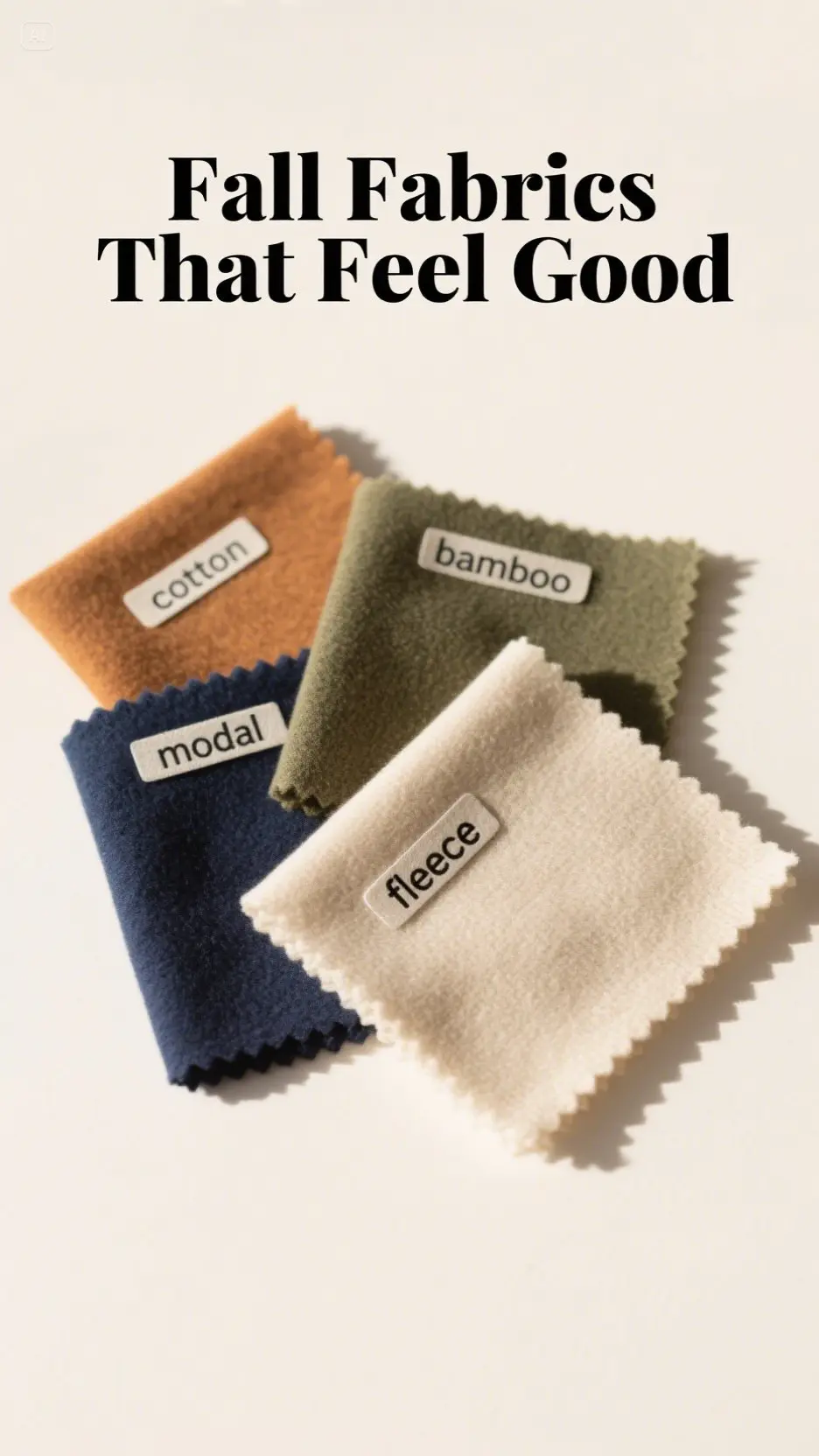
For Highly Sensitive People, clothing comfort starts with what touches the skin. Fabric can either support your nervous system or wear it down slowly throughout the day.
No matter how stylish a sweater looks or how perfectly it fits your fall color palette, if it itches, clings, or overheats you, it simply doesn’t work.
That’s why one of the core principles of fall fashion for HSPs is to prioritize fabric above all else. This is your rulebook for getting dressed without sensory regret.
The Feel-Good Fabric Guide
When choosing fall pieces, look for materials that offer softness, breathability, and gentle movement. These fabrics are often more forgiving to sensitive skin and won’t overstimulate your body as temperatures shift throughout the day.
Top fabrics to consider:
- Organic cotton
Natural, breathable, and widely available. Ideal for layering pieces, tees, and leggings. - Modal
A smooth, plant-based fabric that feels almost like silk but with more stretch and durability. Great for sleepwear, base layers, or soft tops. - Bamboo
Naturally hypoallergenic and temperature-regulating. Bamboo blends are especially useful in socks, undergarments, and t-shirts. - Tencel (Lyocell)
Lightweight, cooling, and gentle on skin. Works beautifully in relaxed blouses, dresses, or scarves. - Jersey knit
Often a cotton blend, jersey is stretchy and soft. It moves well with the body and works for casual dresses or loungewear. - Fleece (when breathable)
Look for fleece made from cotton blends or recycled materials with smooth finishes. Useful in outerwear, but avoid versions that trap heat too tightly or feel plasticky.
What to Avoid When You’re Sensitive
Some fabrics look great on hangers but cause discomfort almost immediately when worn. Even small irritations can become mentally and emotionally draining over the course of a day.
Common culprits for sensory discomfort:
- Wool or acrylic blends
Unless labeled ultra-soft or blended with cotton, these materials often itch or create heat that’s hard to regulate. - Polyester-heavy pieces
Synthetic blends can feel smooth at first but quickly overheat or cling uncomfortably, especially under coats or during weather changes. - Rigid denim or structured tailoring
Stiff pants or tight seams can feel physically restricting, and they often amplify the emotional tension HSPs already carry in overstimulating environments. - Tags, seams, and hardware
These small details can cause big issues. Always check for internal tags or stiff seam lines before committing to a piece.
Tips for Shopping with Sensitivity in Mind
When building your fall wardrobe, think in terms of how an item feels after several hours; not just how it looks in the mirror.
These tips can help:
- Touch before you buy
If shopping in person, run your hands over the fabric and gently stretch it. Imagine how it would feel after a long day. - Check for flexibility
Gently pull at seams or shoulder areas. Does the fabric give? Does it bounce back? - Buy one, then test
If you find a promising item online, order one before committing to multiple colors or versions. Wear it at home for a full day before deciding. - Layer wisely
Start with breathable base layers you trust. Even if you try something trend-forward on top, your body will be anchored in comfort.
5. Color Therapy for Fall: Warmth Without Overstimulation
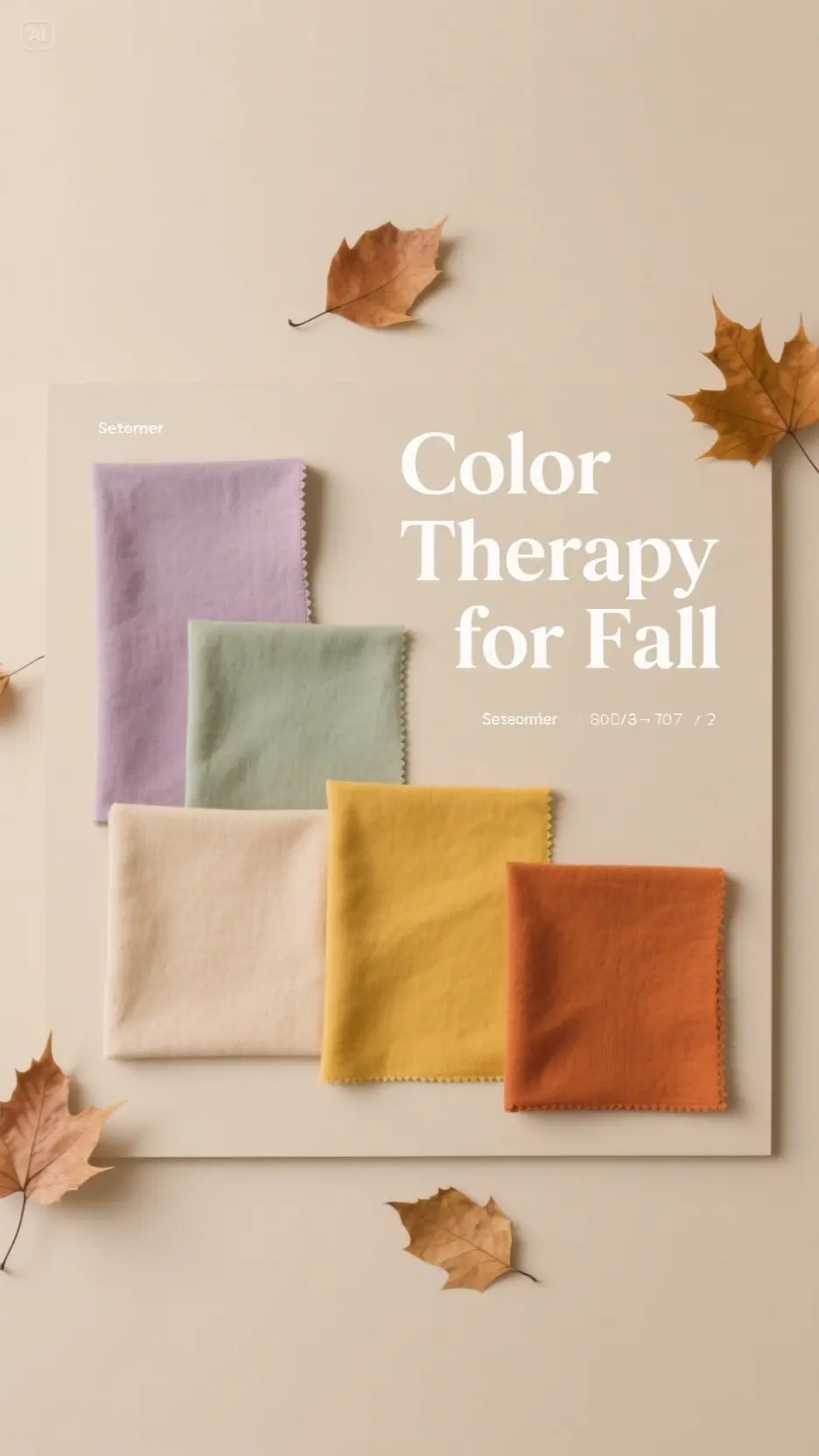
For many Highly Sensitive People, color is both visual and emotional. Certain shades can soothe the nervous system, while others might cause subtle tension or even anxiety without a clear reason why.
That’s why understanding how to work with color, not just wear it, is an important part of fall fashion for HSPs.
This season, trending palettes on Pinterest include everything from cherry red to dill green to soft neutrals like alpine oat and butter yellow.
While some are vibrant and bold, many can be adapted into more calming, sensory-safe combinations with a little awareness and intentionality.
Why Color Choice Matters for HSPs
HSPs tend to be deeply affected by their surroundings, and color is one of the most immediate inputs. Whether you realize it or not, certain colors may influence your energy levels, emotional state, or even your sense of safety.
Here’s how color can impact your experience of clothing:
- Overstimulating colors
High-saturation hues like neon pink, cobalt blue, or harsh black and white contrasts can be jarring over time. Even if the outfit fits perfectly, the visual intensity can keep the nervous system slightly activated. - Grounding colors
Earth tones and muted shades—think soft browns, sage, rosewood, or oatmeal—offer a sense of calm and stability. These tones tend to feel “quiet” and emotionally grounding. - Mood-matching tones
Some HSPs feel drawn to specific colors based on their emotional state. Leaning into this instinct can be a form of self-support. For example, reaching for soft lilac on a mentally busy day might feel like a gentle reset.
HSP-Friendly Fall Color Combinations
Here are some cozy, sensory-safe color pairings that reflect the season without overwhelming the senses:
- Oatmeal + Dusty Lilac
This pairing feels soft, nurturing, and subtly feminine. Works beautifully in knits, scarves, and layering pieces. - Dill Green + Cream
A grounded combo that connects to nature without being too bold. Try this for outerwear or wide-leg trousers with a cozy sweater. - Warm Brown + Soft Red
Inspired by this year’s cherry red trend, this mix uses a muted version of red paired with a stable earth tone. Perfect for accessories or a statement layer. - Sage + Butter Yellow
Offers a light, friendly energy with a calming undertone. Use in small doses if brighter colors tend to feel overstimulating.
How to Choose Colors That Support You
If you’re unsure where to start, try asking yourself these questions:
- How do I feel in this color after a few hours?
- Does this shade reflect or disrupt my current mood?
- Can I see myself wearing this on both high and low energy days?
Color doesn’t have to be boring to be supportive. Fall fashion for HSPs can include richness and depth when you’re simply choosing colors that speak in a softer voice.
Tip: Use Fall Trends as a Mood Board, Not a To-Do List
Instead of copying outfits exactly, create your own fall mood board filled with soothing color palettes and soft visuals. Let these inspire your wardrobe gently, without pressure to perform or match what everyone else is wearing.
6. Slow Style: Mindful Shopping Tips for HSPs
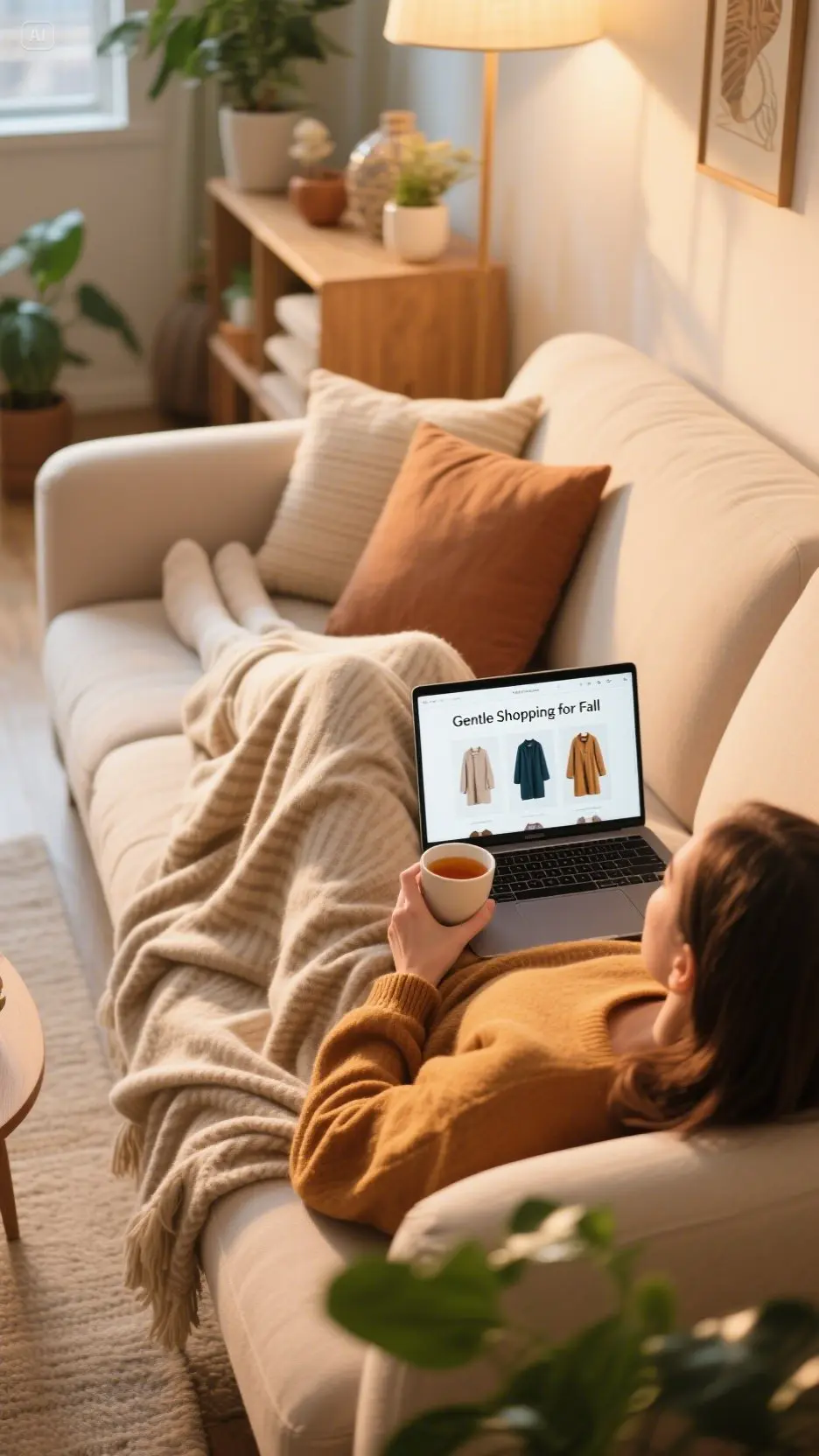
Shopping for clothes as a Highly Sensitive Person is rarely just about finding the right size or trend. It can be an emotionally charged experience, filled with overstimulation, decision fatigue, and internal pressure to make “the right” choice.
Fall fashion for HSPs works best when the shopping process feels as supportive as the clothes themselves.
Embrace a slower, more intentional approach to fashion to protect your energy and build a wardrobe that genuinely feels good—inside and out.
Why Shopping Can Be So Draining for HSPs
Even when you know what you need, the shopping environment itself can be a trigger. Bright lighting, music, crowds, and rows of options can quickly lead to sensory overload.
Add in the pressure of fitting into trends or choosing between dozens of similar items, and it’s easy to leave the store more exhausted than inspired.
Online shopping can offer relief from some of these pressures, but it brings its own challenges. Examples include decision paralysis, fear of returns, and not being able to feel the fabric before you buy.
Tips for a More Supportive Shopping Experience
These small adjustments can help you move through the shopping process with more ease and confidence:
1. Create a small list before you browse
Start by identifying 2 or 3 key items that would support your fall wardrobe. Keep your list short and specific. For example: “soft layering sweater in neutral tone” or “loose-fit pants for daily wear.” This keeps you focused and reduces decision fatigue.
2. Set a time limit or emotional boundary
Limit shopping to times when your nervous system feels relatively steady. If you’re shopping in person, avoid peak hours. If shopping online, give yourself permission to close the tab if you start to feel overwhelmed. You can always come back later.
3. Stick to trusted brands or materials
Once you find a brand that consistently feels good on your body, lean into it. Many HSPs benefit from building a small wardrobe around just a few reliable pieces made from familiar fabrics. Think of it as creating a sensory-safe foundation.
4. Read customer reviews for fabric and fit cues
Reviews can be a goldmine of sensory insight. Look for mentions of softness, breathability, stretch, or scratchiness. If people consistently mention that something is “itchy” or “runs stiff,” trust your instincts and skip it.
5. Start with one and test it fully
If you find a style or item you think might work, order just one color or version first. Wear it around the house for a full day to see how it holds up. Pay attention not just to how it looks, but to how it makes you feel after a few hours.
Shopping Doesn’t Have to Be Draining
Fashion is often marketed as a way to express yourself—but for HSPs, it also needs to support your nervous system. When you slow down and shop with intention, you’re not just buying clothes. You’re curating comfort, stability, and emotional ease.
This mindful approach helps build a wardrobe that doesn’t just look like you. It feels like you. And that’s what real style is all about.
Embrace Fall Fashion That Supports, Not Stresses
Fall fashion doesn’t have to be a source of tension. For Highly Sensitive People, getting dressed can become an act of self-respect when the clothes we choose support our bodies, calm our minds, and honour our sensitivity.
It’s not about chasing every trend or building the perfect outfit. It’s about feeling steady, comfortable, and clear in what we wear—especially in a season that often asks more of us, both socially and emotionally.
From soothing colors and gentle fabrics to thoughtfully chosen pieces that don’t fight your nervous system, fall fashion for HSPs is about tuning into what helps you feel most at home in yourself. And this year, many of the popular trends already point in that direction.
Cozy textures, grounded color palettes, and styles with emotional depth are rising and they’re making space for sensitive bodies to breathe.
If you’ve ever felt like fashion wasn’t made for you, know that it can be.
You don’t have to compromise your comfort or mute your sensitivity to feel put together. You just need the right tools and the freedom to honor what feels good.
Feel free to save this post for later or pass it along to someone who might need a gentler approach to getting dressed this fall.
Plus, always remember there’s more than one way to show up; and this season, ease can lead the way.



